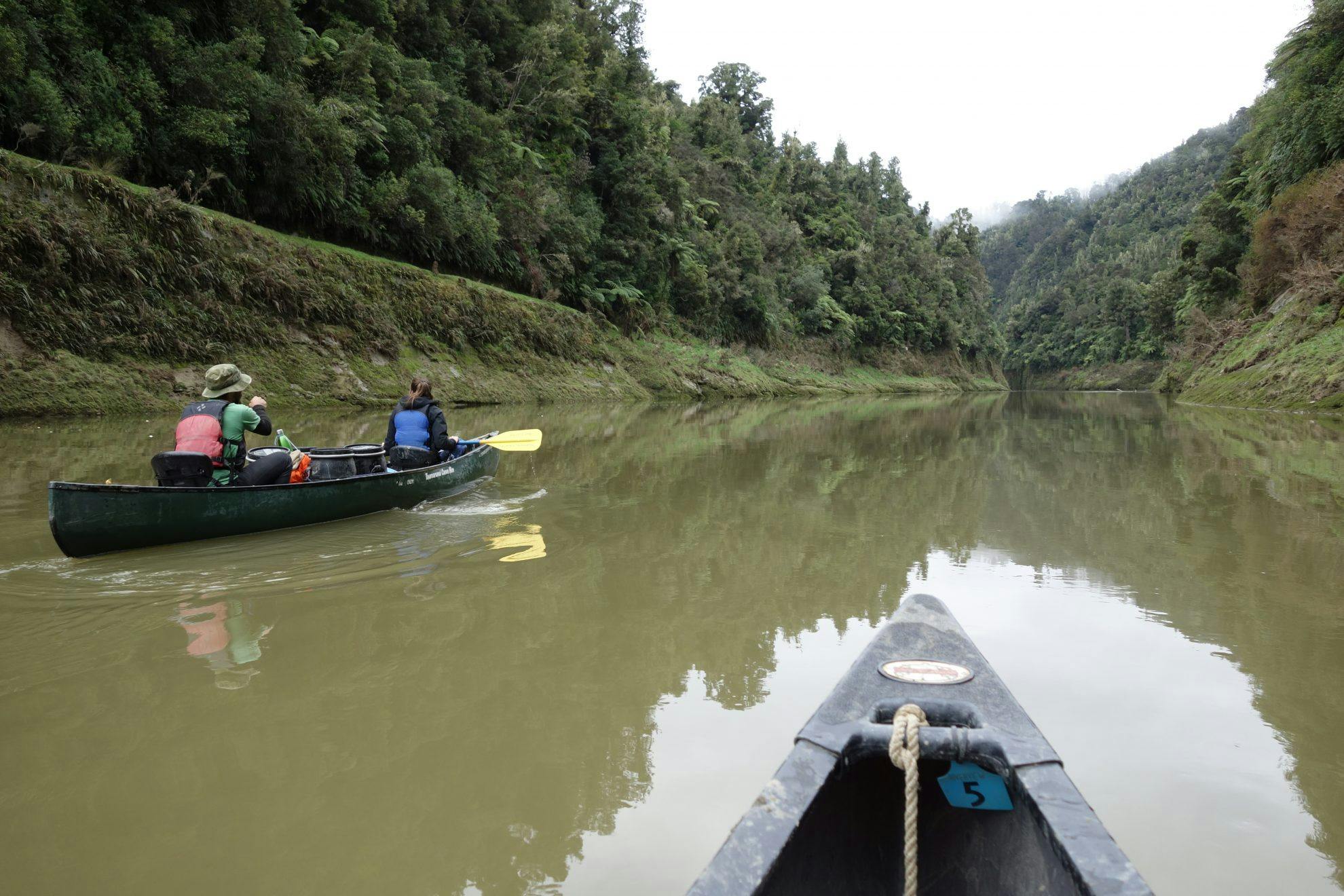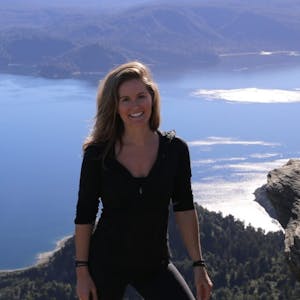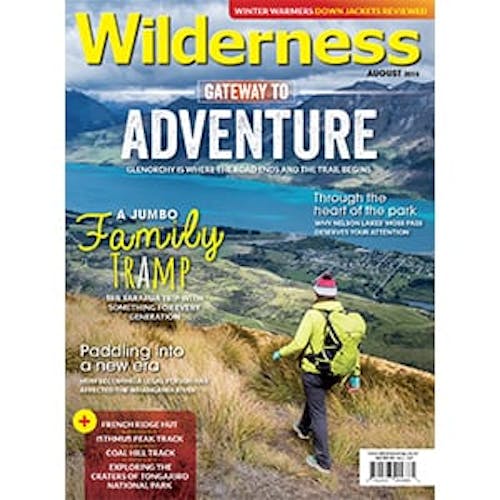As the Whanganui River enters a new era, Meghan Walker discovers that this Great Walk is far more than just a multi-day trip
You got this,” I tell myself, as I plunge my paddle into the murky brown water. We are five minutes into our three-day canoe trip down the Whanganui River and already we’ve hit our first rapid.
“Aim for the big ‘V’!” Callan calls out from the front of the boat. As a former canoe guide, I have more experience steering, so Callan is the powerhouse, the engine to my rudder.
Only, in that first rapid, I forget I’m the rudder.
As we creep closer to the first waves, my mind goes back to river rafting trips I’d done in Idaho and California, in which I’d always been instructed to paddle hard through each rapid. So, that’s what I do.
Halfway through the rapids, the boat suddenly veers hard to the left and I realise my error. The left side of the canoe tilts dangerously downward, and water pours in. Callan leans to the right, and with two strong and swift paddles, we are upright again, narrowly escaping a capsize. We make our way to the nearest beach and bail out the water.
The near-capsize helped me realise two things: first, as the rudder, steering is my only objective, to prevent the rapids and subsequent whirlpools from spinning us in circles and swallowing us whole. The second is of the sheer power of the Whanganui. My previous experience as an ocean canoeist in the intertidal waters of Washington State’s San Juan Islands wasn’t as helpful as I’d expected.
The Whanganui River spans 290km, from Tongariro to the Tasman Sea, and much of the river is surrounded by Whanganui National Park. It’s busiest through the summer months; in the 2017/2018 season, 8537 people canoed the river.
The river journey became one of New Zealand’s Great Walks in 1993. The Department of Conservation had begun caretaking the river in the late 1980s, working to eradicate pests and restore native flora and fauna. In addition to its conservation work, it also developed new campsites and huts; John Coull and Tieke Kainga huts.
The river is home to several tribes who have been fighting for formal recognition of their connection to the Whanganui since the 1870s.
In early 2017, the Te Awa Tupua – also known as the Whanganui River Claims Settlement Bill – was passed, granting the river the same rights as a person and establishing a new legal framework for the river.
In the year since the new status, Nga Tangata Tiaki o Whanganui has been established as a post-settlement governance entity and two official spokespeople were selected: Turama Hawira and Tariana Turia.
When Wilderness reached out to Hawira and Turia, they declined to comment. According to project manager Julie Herewini, this is to allow the new leaders “time and space to undertake the required research, information gathering and conversations within the communities of the Whanganui River prior to speaking publicly as the river”.
Aaron Rice-Edwards, a DOC strategic advisor, says the department is now working with Nga Tangata Tiaki to establish an understanding for the new legal status, “to ensure the new framework is reflected in our management and operations practices throughout the catchment”.
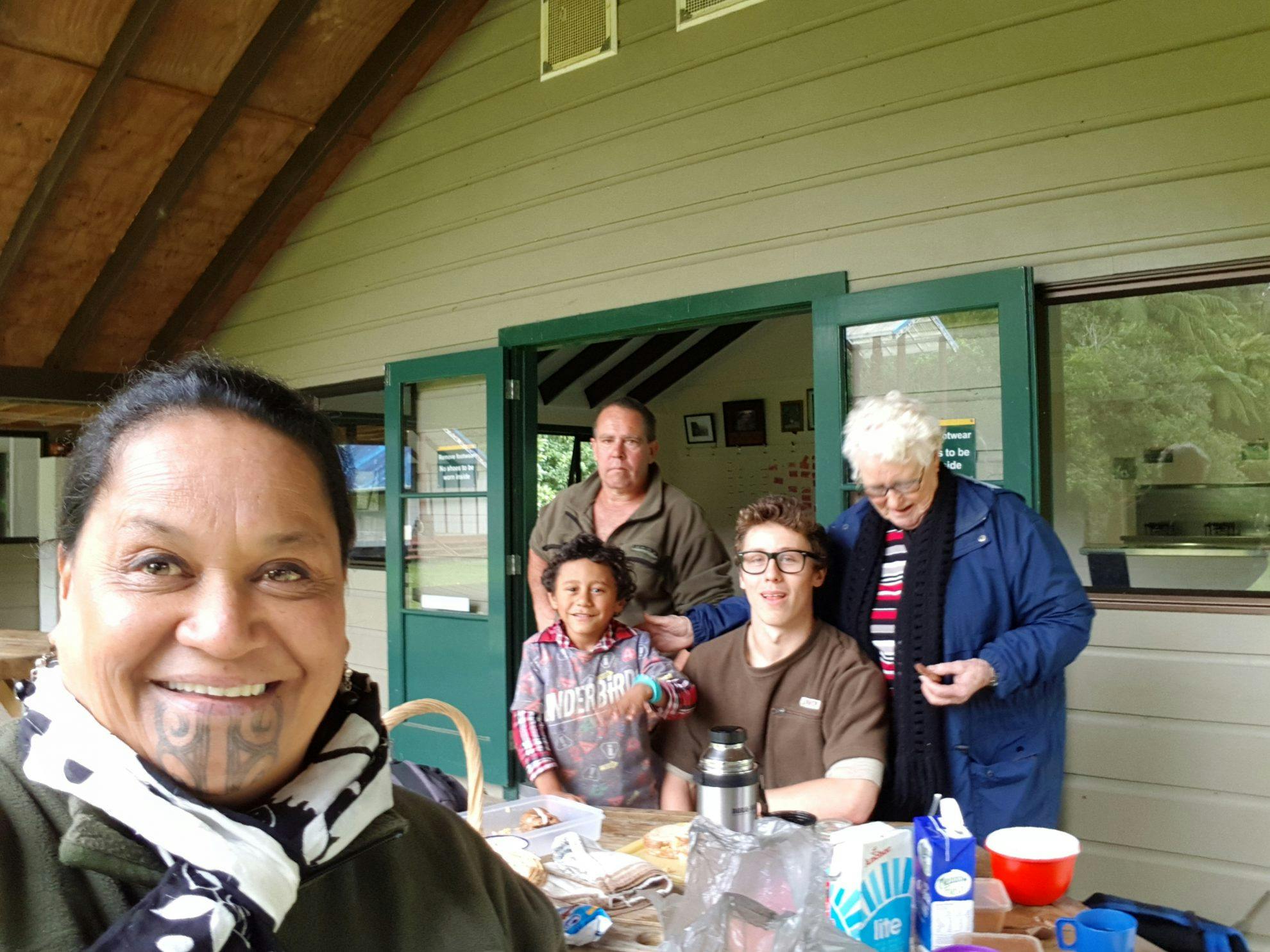
Kiritahi Firmin is of the Whanganui people. “I was born and raised on the banks of the Whanganui River. I’m a woman of the river.” She and her husband Brian and young son John Jr. spend the summer months at Tieke Kainga marae.
“We’re there to receive and look after any traveller that comes to Tieke. We share our story, we share the history, and the culture of the marae. It’s a very important role because we are not just hut wardens, we are kaitiaki, or guardians, that keep the home fires burning.”
As guardians of Te Awa Tupua, Firmin says their ancestors had always told them to look after those who visit the river. They talk to travellers about environmental protection and the cultural significance of their connection with the river.
“We explain to them that the reason we say ‘Aotea is our waka, Ruapehu is our mana, Whanganui is our awa’, is because that’s our anchor in the ground. Our tribal jurisdiction is from the mountains to the sea. When you come down our river, you’re coming down our very special ancestor. Our job is to help you understand, as a traveller, that it’s a special privilege to be invited to our river. You’re there to ‘waka ta’ – to let things go. It means to reset yourself for the next journey in life.”
Firmin says the importance of the new legal status cannot be understated; her iwi has been negotiating with the Crown for over a century. “Our people, for 100 years, fought for the ownership of the river. Now we are in a beautiful phase where our river people are able to look at how we sustain our river, the ecosystem, our iwi itself.
“It needed to happen, and now we are the guardians of it. We are the people who can maintain its spirituality, maintain its mana, and explain what the healing waters have always done for us. The Maori people have learned how to swim, how to fish, how to sustain ourselves on our river.”
Firmin says the Crown’s betrayal of the Treaty of Waitangi manifested in many ways over the past century. She referenced the Tongariro Dam upriver, saying the Whanganui’s waters were three times higher before it was diverted.
“It was like taking away our bloodstream, like siphoning out our blood. It changed the ecosystem, it changed the forest and fisheries. And we had no say about that. So you can imagine, the tears, the hurt.”
Since the announcement last year, not much has changed on the Whanganui, according to Ron and Karen Hawkless, owners of Taumarunui Canoe Hire. In fact, they didn’t know anything about the Whanganui’s new legal status until they heard it on the local news.
“It just came out in the newspaper, and we knew nothing about it,” Karen says. And in the year since the decision, they still feel left in the dark regarding what could potentially change as a result.
And, they’re not alone; they say many other operators are in the same position.
“All of us on the river have no idea how it impacts us,” Ron says. “The only thing I can say that’s changed is Tieke, which is the last hut and also a marae. When we first started, iwi would embrace people coming in, treat them like family, eating at the table. But then this year, there were just two hut wardens instead.”
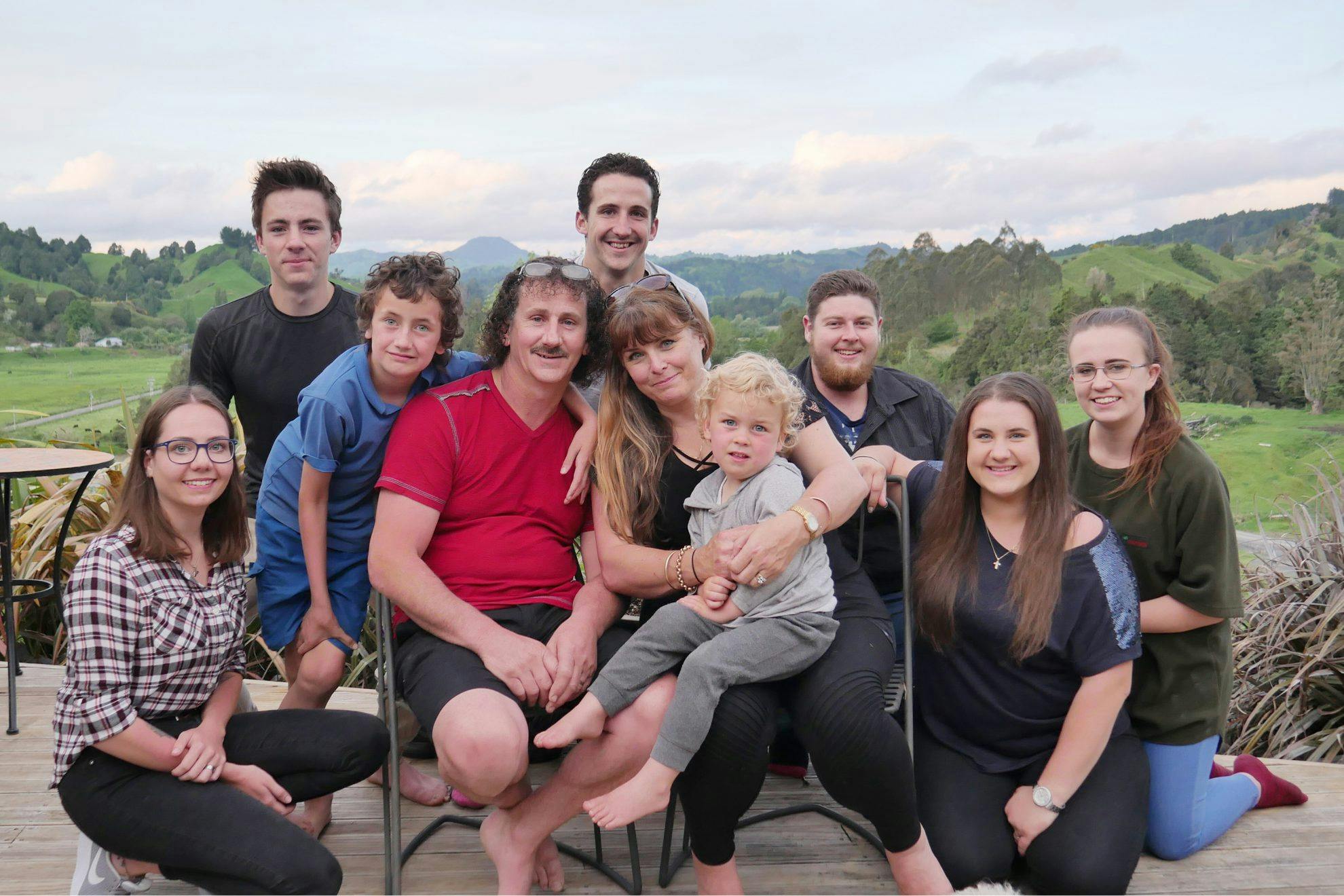
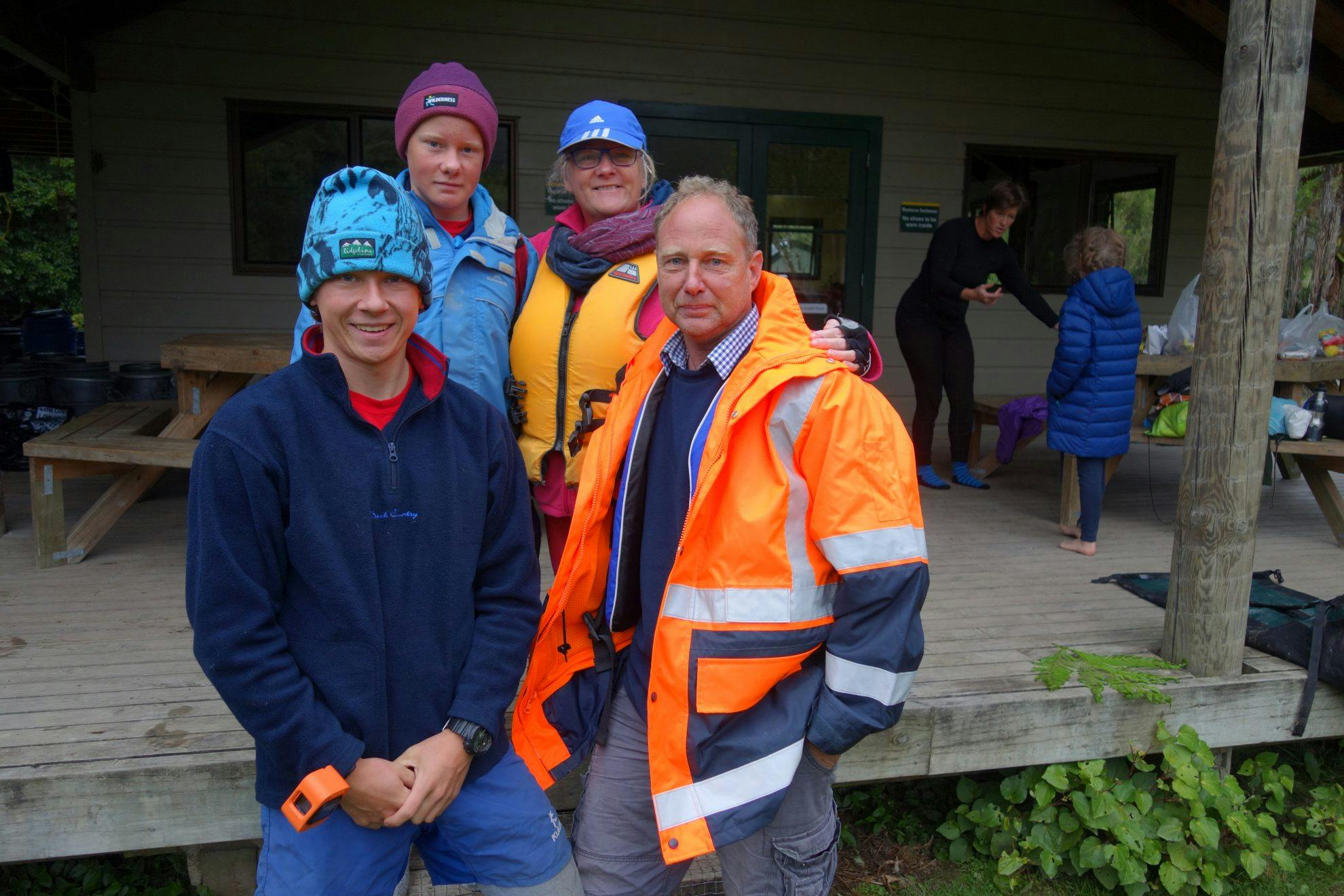
We had opted for a three-day trip, starting halfway down the river in Whakahoro and finishing up at Pipiriki. That gave us two nights on the river; one night at John Coull Hut, and the next at Tieke Kainga.
Our first day is a long one, but we’d arrived at the tail end of a rainy period and the river runs faster in flood which meant we shaved an hour off the usual time.
A serious flood a few weeks prior to our trip had dramatically changed the landscape, evident from the numerous landslides and shoreline erosion. Whakahoro was a veritable mud pit. But beyond the sludgy banks, the Whanganui is a lush green corridor, pockmarked by caves, mossy cliff faces and native bush all around.
We made it to John Coull Hut in the late afternoon and hauled our canoes up the banks, tying them to a sturdy tree. The river had risen 10m in the devastating March flood, which meant the path from the shore to the bushline was mostly obliterated.
We carefully make our way up the muddy bank with our gear barrels, where we meet one of the hut wardens, Peter Wilson. After a quick hello, Wilson graciously helps us get our gear up to the near-full hut.
After settling in, our friend Pete Simpson picks up the hut book. As he pens our names, he reads aloud, “What are our trip intentions? Cheap marriage counseling,” he jokes, as the hut erupts in laughter.
“Husband and wife in the same canoe? That’s never a good idea,” Wilson says.
Wilson has been a warden for John Coull Hut almost as long as I’ve been alive. He started wardening 30 years ago, back when the hut was located about 1km downriver from its current location. The hut was moved because it stood next to a Maori gravestone, much to the chagrin of local iwi.
“It got nasty,” Wilson rememembers, “and eventually DOC decided the best thing to do was to shift the hut here.”
DOC organised a helicopter to move the hut, and then accidentally dropped it in the bush. So, a new hut was eventually built. Wilson helped dig out the site by hand.
Numerous floods over the years have kept DOC busy with trail
maintenance. Wilson says that of all the Great Walks, Whanganui probably requires the most upkeep because of the river.
“It’s ongoing work for DOC because the weather knocks this place around,” he says. “They do what they can, but for a Great Walk, the tracks from the river to the campgrounds are not very good at all.”
Wilson has canoed the Whanganui every summer for decades. He remembers when there were no official campsites. The river has cleaned up considerably since then, he says. There are far fewer logjams, and the bush is thriving.
“Back when we first canoed, there were wild cattle, goats, and possums. Possums ate the top storey, goats ate the bottom storey, and the cattle just crashed through the bush. Instead of thick bush like it is now, you could see through it,” Wilson says. “When DOC came on the scene about 25 years ago, they drove out the wild cattle, knocked the goats back, and have now knocked the possums back.”
Prior to DOC’s formation, Wilson said there wasn’t much environmental stewardship of the river. “When DOC first came in, they must have been in culture shock because the bush really was nearly destroyed.” For example, he says there were no rata trees 15 years ago; possums had chewed them out completely. “Now, in November and December, it’s just a sea of rata. It’s absolutely beautiful.”
But the early days of DOC’s involvement on the Whanganui wasn’t all roses, Wilson says. The biggest conflict he can remember was the occupation of Tieke Kainga marae.
DOC had been managing the river for about eight years when, in order to help raise money for operations, it started charging people to stay at the huts and campsites on the river. Tieke Kainga Hut was built on Maori land, which initially didn’t bother the family who cared for it. However, when DOC imposed the fees, they protested the ongoing lack of iwi consultation, and staged an occupation in 1993.
The first week of the occupation, Wilson was guiding on the river and brought down a group of high school girls. They had planned to stay at Tieke for the second night of the journey. He was concerned that the occupation might mean they couldn’t stay in the hut.
But they were given the traditional Maori welcome, and were surprised to see five German guys – also canoeing the river – joining in.
“It was superb,” Wilson says. “It was an experience that would just blow you away.”
At the time, Wilson was a member of the Friends of the Whanganui River, which he describes as a “fan club” of the river. The group regularly met with DOC, and at one of their monthly meetings, they spoke about what to do about the situation.
“DOC was trying to kick them off. They asked the police to do it but the police said no, because they didn’t see anything wrong with the occupation. DOC got their lawyers onto it, but they lost the case,” Wilson recalls.
“There was quite a bit of nastiness going on between DOC and the iwi.”
DOC asked the Friends of the Whanganui River for support, which at Wilson’s urging, they declined. “When the iwi are there, it’s a really great experience,” he says. “People should experience it.”
“Eventually, the iwi got their way and now DOC supports them.”
Now, Te Whanau o Tieke, part of the Uenuku iwi, jointly manages Tieke Kainga with DOC.
Wilson says he’s pleased about the river’s legal personhood, and that it’s now firmly co-managed by iwi and DOC.
“It’s always been their river. They’ve looked after it, they treat it like a person,” he says.
“When a group comes down the river with Maori guides, they say a prayer before they get on the river. If they have pakeha people with them, they explain the relevance of it. They say, ‘I am the river, and the river is me’. And so, to call it a person is quite relevant, I believe.”
Like Ron and Karen Hawkless, Wilson hasn’t seen any changes since the new status.
He says he sees the legal personhood as primarily a cultural understanding between DOC and the iwi of the whole river.
“DOC will now not do anything major on the river without consultation with iwi,” Wilson says.
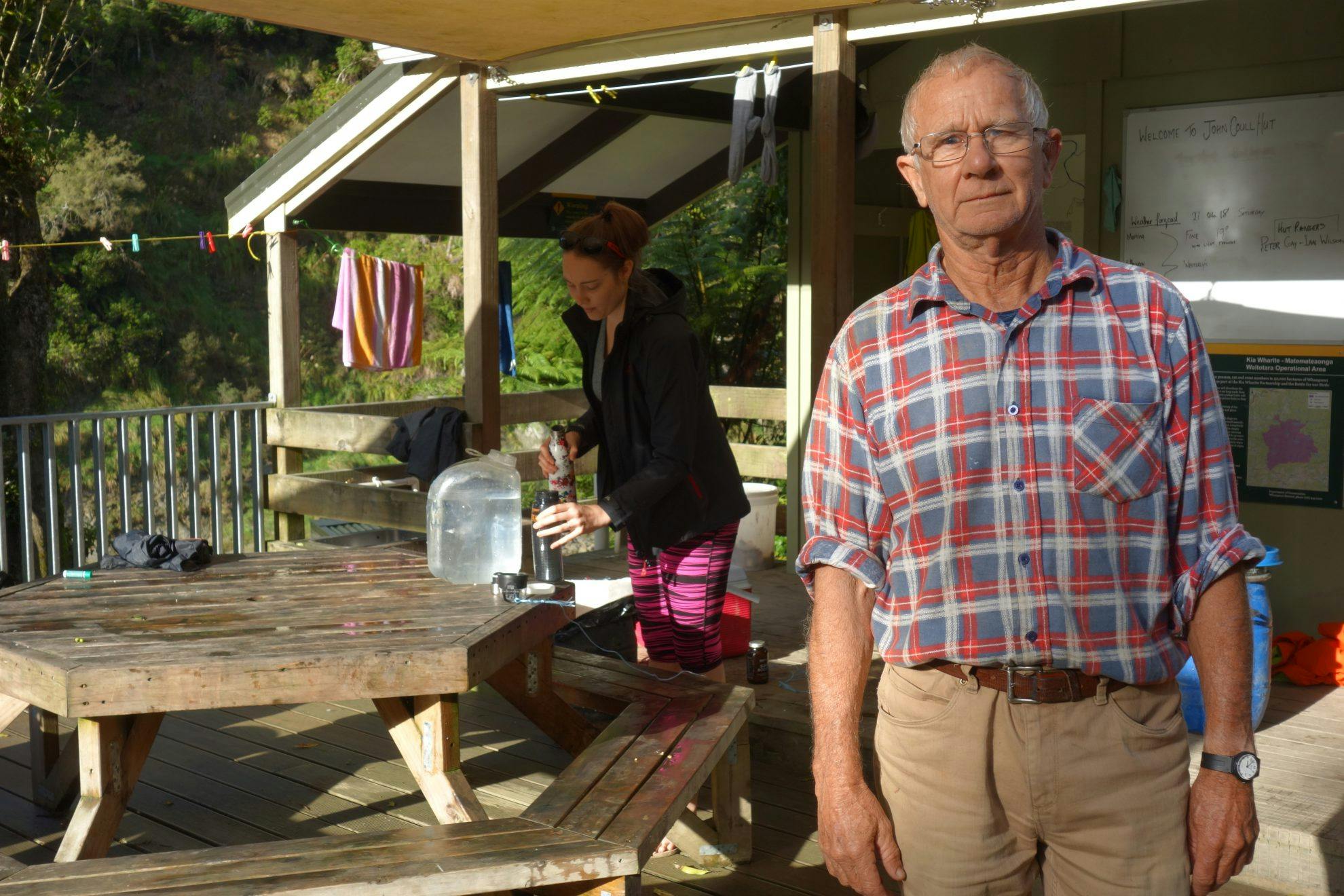
We leave John Coull Hut mid-morning the next day, our sights set on reaching the trailhead to the Bridge to Nowhere.
The short walk to the bridge allows us to stretch our legs and marvel at the strange feat of engineering that resulted in a beautiful, yet useless, bridge over a tributary of the Whanganui.
The bridge was constructed in the 1930s to serve the families who attempted to develop and farm the eastern side of the Whanganui. The land, known as the Mangapurua Valley, was made available in 1919 to provide farms for First World War veterans. Sadly, the families’ efforts were futile when they realised that the roots from the trees they’d removed were the only thing holding the land together. The erosion was substantial, and farming proved impossible.
Those in the halted settlement packed up their homes and abandoned the area, leaving the bridge as the only sign of their short-lived residency.
Our time at the Bridge to Nowhere is also short-lived; we head back down the hill to the canoes and find a sunny spot on the opposite side of the river for lunch.
Our afternoon paddle takes us through mostly calm waters. The river narrows in places, with glistening mossy cliff faces casting deep shadows over the murky water. We land our canoes at Tieke Kainga just past 4pm, and make our way up the heavily eroded shore to the hut and campsite.
Tieke Kainga is a beautiful marae, with a carved archway at the entrance leading to a wide grassy area, the hut on the right and the marae meeting house on the left. In front of the meeting house, there’s an ornately carved totem pole and a few benches.
The hut is in two sections, with the bunks separate from the kitchen and dining area. There’s a large wrap-around deck, solar panels to provide electricity for the kitchen lights, and a massive stove and oven.
Not far from the hut is the campsite, complete with its own shelter, and a separate toilet block that’s nearing completion.
Because it’s so late in the season, there’s no hut warden present when we arrive, which is a shame, especially for fellow canoeists Toni and Wayne Thomsen. They said they have fond memories of the warm welcome they received from the Tieke iwi when they canoed the river in 1995.
“They welcomed us when we arrived, and cooked a big roast which we all shared,” Toni remembers.
“They provided everything for us – we didn’t expect it,” Wayne says.
The Thomsens, from Taupo, are on the river with their two teenage sons, Robbie and Sam. Mum and dad are in one canoe, and the two boys in the other. They’re on a four-day journey, which they say has been fantastic. But they were disappointed to see the meeting house closed when they arrived, and not a soul in sight.
“We were surprised there was no one here, and sad because we had such a wonderful experience last time,” Toni says.
“It would have been nice to show the boys the Maori way of life,” Wayne says.
When we discussed the new legal status, they were both hopeful for the future of the Whanganui.
“I think if it can protect the river from becoming a commodity that can be bought and sold, and be recognised as its own identity with close links to the Whanganui iwi, then it’s fantastic.”
Kiritahi Firmin says the Whanganui should be regarded as far more than a commodity. “It’s not just a place where you come down for a three-day trip, and say, ‘oh, I’ve done the Whanganui Journey’. That’s not how we relate ourselves to the river.”
It’s about feeling and sensing the river, Firmin says, “coming onto the marae and learning what our journey really was, and the reason why we maintain our culture”.
Firmin says the river is now struggling with the high number of visitors. She referenced the flash flooding as a sign that the river needs a break. With the new legislation, she hopes to see a cap enforced on how many people are allowed to canoe it each year.
“In order to keep our ancestor healthy, pristine and alive, I believe we need to look at regulating travellers. Last year we saw thousands. And this year, we had a couple of huge floods. This is a sign. Our ancestor is saying ‘I need a rest’.”





